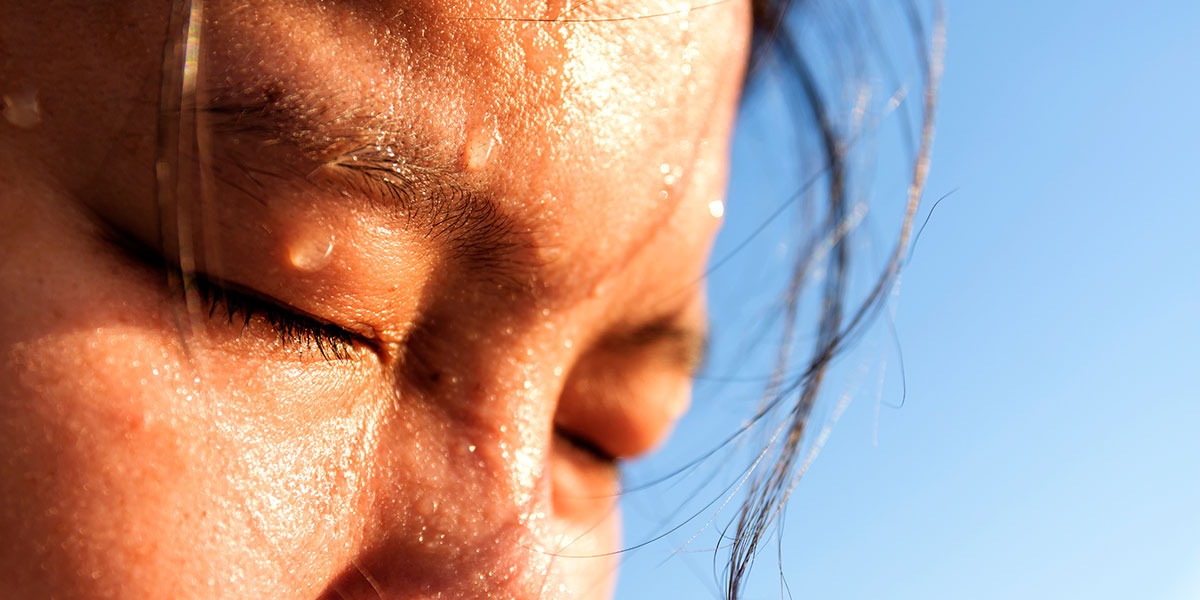Stay Healthy in the Heat
Published on August 30, 2022
Summer 2022 has been one of the hottest in history, setting records with triple-digit temperatures in Europe and Asia. Here in Southern Nevada, we’re accustomed to such temps being the norm every June, July and August but can still fall victim to heat-related illnesses.
Heat makes a person sweat, which then cools the body as it evaporates. In extreme heat, the evaporation process slows down, which could put additional stress on the body that can lead to heat-related illnesses or even death. It’s extremely important that we learn to recognize and treat heat-related illnesses and take steps to stay cool and remain healthy.
Recognize signs and symptoms of heat-related illness.
- Sunburn is red, painful and warmer-than-normal skin caused by sun exposure. Healing usually occurs within a few days, but some sunburns are worse and may require medical attention. Consult a doctor if fever, fluid-filled blisters or severe pain are experienced.
- Heat rash occurs from excessive sweating during hot, humid weather. It looks like a red cluster of pimples or small blisters and is most common among children. The best treatment is to provide a cooler, less humid environment and keep the rash area dry.
- Heat cramps may occur in people who sweat a lot during physical activity, due to a loss of salt and water. The best treatment is to stop all activity and rest in a cool, shaded area until at least a few hours after the cramps subside. Water, fruit juices and sport drinks are useful for hydration and raising salt and mineral levels.
- Heat exhaustion can happen when a large amount of water and salt is lost through sweat. Signs of heat exhaustion include heavy sweating, pale skin, muscle cramps, tiredness and weakness, dizziness, headache, nausea and vomiting, fainting, a fast and weak pulse, and fast and shallow breathing. Seek medical attention right away so that heat exhaustion does not turn into heat stroke.
- Heat stroke happens when body temperature rises too quickly and the body is unable to sweat and cool down. Warning signs include a body temperature over 103°F, red and hot skin without sweat, a fast pulse, strong headache, dizziness, nausea, confusion and unconsciousness. Seek emergency treatment to reduce the chance of death or permanent disability. Lower the victim’s body temperature to 101-102° in a shady area by using a cool and wet body wrap, a tub of shallow water (if awake and alert) or a cool shower. Do not give fluids.
Take steps to stay cool during extreme heat.
- Stay hydrated by increasing fluid intake, regardless of your activity level. Don’t wait until you are thirsty to drink water. Keep small bottles in the freezer to take with you when you go out.
- Stay in an air-conditioned environment whenever possible, such as your home or workplace, a mall, a library or another public space. At home, close and cover windows that face the sun. Place a thin, damp cloth in front of fans to help cool the room, but make sure they don’t get caught in the blades. Visit clarkcountynv.govfor an up-to-date list of cooling stations that open around Las Vegas on extreme heat days.
- Reduce sun exposure and avoid getting too hot when outdoors. Avoid direct sunlight as much as possible. Wear lightweight, light-colored clothing. If working or doing activities outdoors, take regular breaks in the shade. Use cool, damp towels to help lower body temperature as well.
- Keep your children and pets cool, too. Follow the tips above, and do not leave children or pets unattended and unobserved in hot outdoor environments. Never leave them inside a car without air conditioning, even with the windows cracked or open, since the temperature can be much higher than outdoors.
The Southern Nevada Health District wants everyone to enjoy summer in the safest way possible. For more information on heat-related illnesses and the steps to take to avoid them, visit www.snhd.info/heat or www.cdc.gov/disasters/extremeheat.


